- Blog
- How Christopher Cloos Improved Their Conversion Rates By 37%
How Christopher Cloos Improved Their Conversion Rates By 37%
-
Nikolett Lorincz
- Case Study
- 6 min read
Table of Contents
Christopher Cloos is a Danish DTC brand that sells high-quality, timeless eyewear at reasonable prices. They make their glasses from only the best materials and keep their designs timeless, minimalistic, and classic—with a modern touch. Christopher Cloos is the story of meeting with an enigmatic man in the south of France during a Holiday.
Meet Christopher Cloos
The inspiration for the company and name came when the two founders met an intriguing man from Monaco, who introduced himself as Christopher Cloos.
The founders were struck by his fondness for timeless sunglasses, so they decided to create their own line of classic and affordable sunglasses.

Since their ecommerce business was founded in 2016, the Christopher Cloos company has grown into a globally-recognized brand that collaborates with the likes of Tom Brady and Swedish supermodel Elsa Hosk.
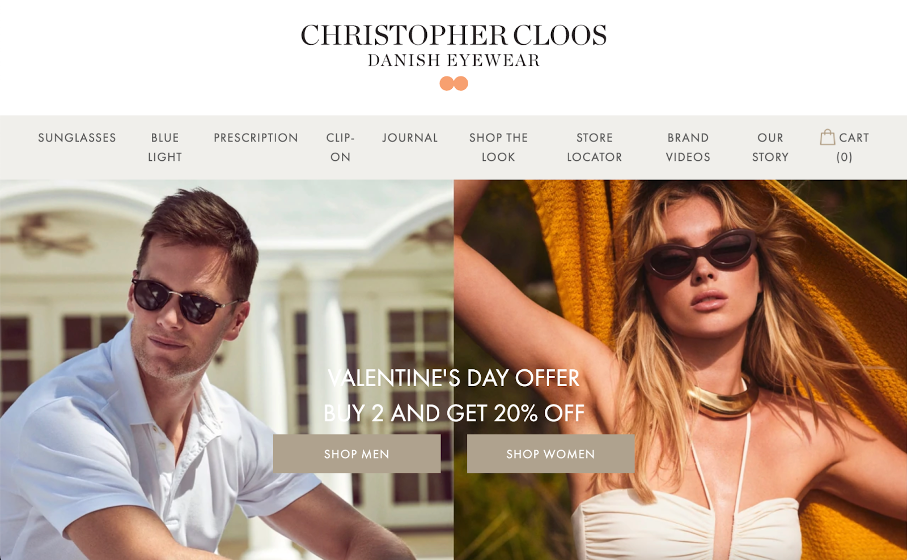
Challenges
Since the team launched their partnership with Tom Brady, the ecommerce store’s sales increased by 1,600%.
They earned more from the collaboration than they have spent on paying Tom Brady, but unfortunately, the company still wasn’t profitable.
They were losing tons of customers on both their product and cart pages. So they wanted to improve their sales and turn their traffic into long-term revenue.
Although the Christopher Cloos team was skeptical about using popups on their website, they decided to test the waters and try popups to improve their conversion rates.
With the help of OptiMonk’s CVO experts (you can read more about our methodology here), the Christopher Cloos team found that three of their user segments needed attention:
- New homepage visitors
- Product page abandoners
- Cart abandoners
Let’s take a closer look at each of these segments and the campaigns that Christopher Cloos used to raise their conversion rates by 37%.
Solutions
There wasn’t a one-size-fits-all solution for Christopher Cloos’ challenges. Since the most problematic user segments were at very different stages of the customer journey, they needed more than one approach.
1. Welcome popups for new homepage visitors
New homepage visitors can be indecisive because they’re confronted with so many choices, and are unsure of how to get started. Hence, they often bounce because of the paradox of choice.
That’s why the Christopher Cloos team decided to help new visitors get started with shopping and make them subscribe to their brand’s email marketing messages—so they could learn more about the brand and its products.
The team did this by A/B testing two different types of popups to see which produced better results—a classic welcome popup and a more personalized conversational popup.
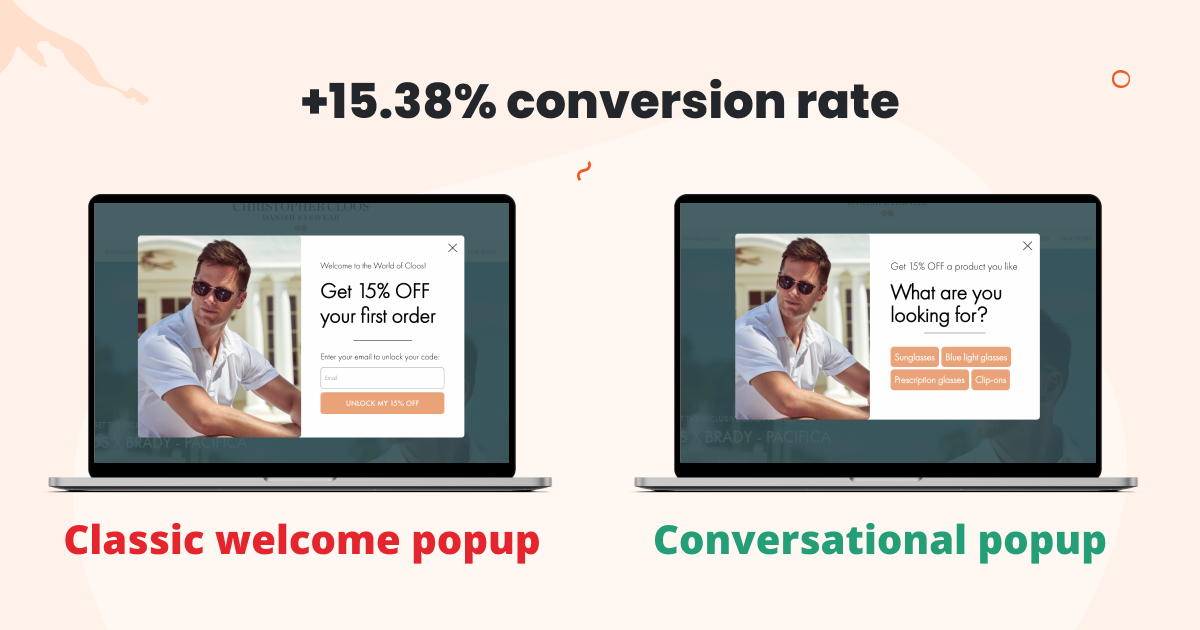
They performed a one-month test period and found out that the conversational popup converted at a 15.38% higher rate than the classic welcome popup.
2. Discount popups for product page abandoners
The Christopher Cloos team made a second campaign that targeted visitors who reached their product pages but had not added anything to their cart yet.
They used an exit-intent popup to show special offers to visitors who were about to abandon their product pages. This encouraged them to add one or more items to their cart, instead of leaving the site.
To make sure that they were reaching their customers, they also ran two variants—one with a countdown element and one without.
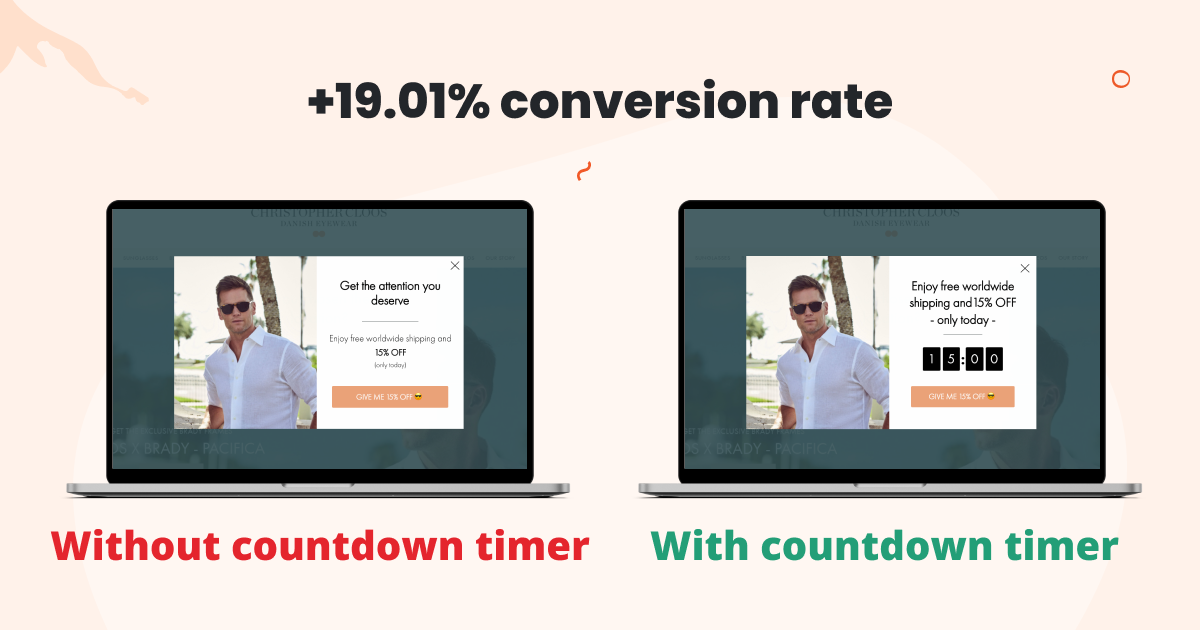
Raising the FOMO with a countdown timer had a huge effect on their conversion rate. The popup with the countdown timer converted 19% better than the one without a countdown.
3. Save cart abandoners with limited-time discounts
Cart abandoners are already highly engaged in the shopping process. So in many cases, they just need a final push to actually complete their orders.
A special offer can often provide that incentive to buy now rather than later. That’s why Christopher Cloos ran the popup below, which offers 15% off for a limited time only (15 minutes, to be exact).
Extremely short-term deadlines like these are one great way that Christopher Cloos used to increase urgency:
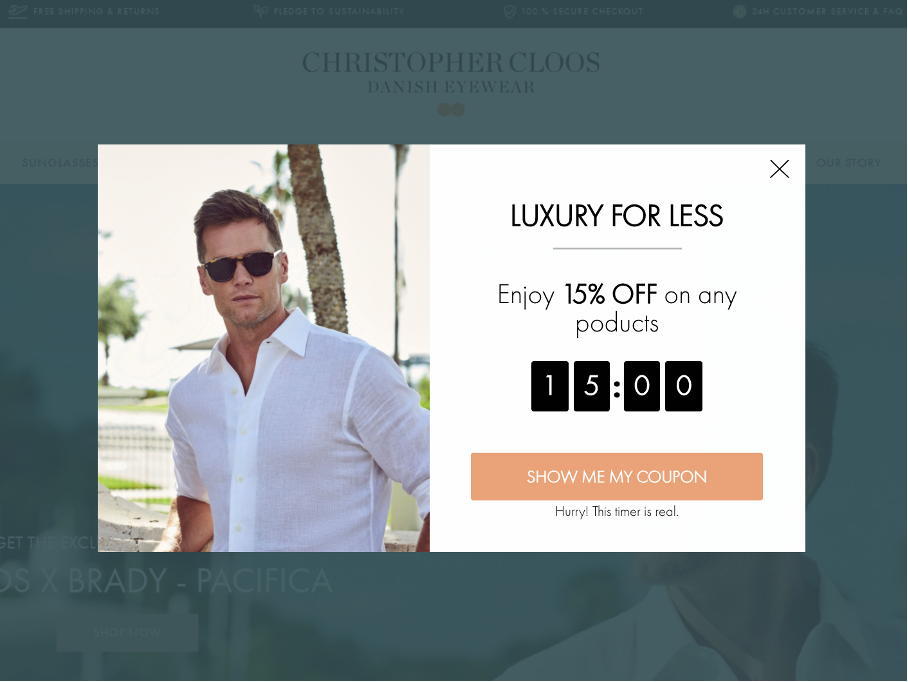
Then, on the second page, they displayed their coupon code:
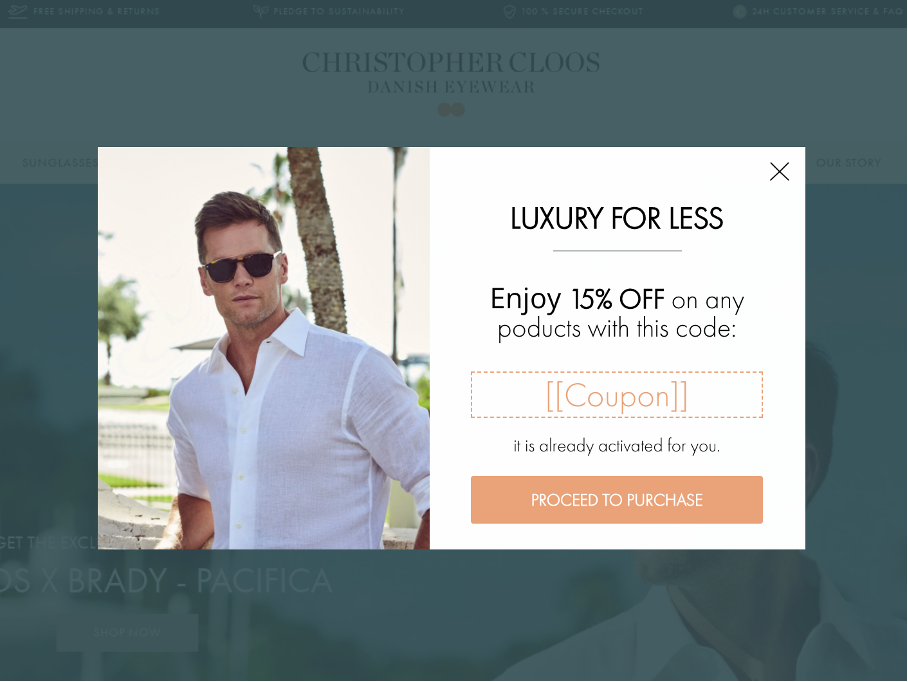
This cart abandonment campaign reached an amazing conversion rate of 37.24%.
Results
With just these three campaigns, Christopher Cloos was able to achieve measurable improvements in conversion rates, email subscriptions, and revenue.
They also learned valuable data on what does and doesn’t work for their brand and more importantly, what resonates best with their customers.
Here are their highlights from just one month of using OptiMonk popups:
- 36.87% increase in their ecommerce conversion rates
- 868 new email subscribers
- 305 coupon redemptions (which assisted with 16% of their total revenue)
These are astounding numbers, but what lies behind them is even more impressive.
Christopher Cloos created a more seamless customer journey by crafting popup campaigns that tightened up those specific stages where they were losing the majority of their potential customers.
Christopher Cloos put conversational popups to use in order to collect emails and convert first-time visitors—but the story didn’t end there. Those email subscribers moved to the next awareness stage, and eventually, became loyal customers.
Would you like to set up similar campaigns? Try this template:
Migration has never been easier
We made switching a no-brainer with our free, white-glove onboarding service so you can get started in the blink of an eye.

What should you do next?
Thanks for reading till the end. Here are 4 ways we can help you grow your business:
Boost conversions with proven use cases
Explore our Use Case Library, filled with actionable personalization examples and step-by-step guides to unlock your website's full potential. Check out Use Case Library
Create a free OptiMonk account
Create a free OptiMonk account and easily get started with popups and conversion rate optimization. Get OptiMonk free
Get advice from a CRO expert
Schedule a personalized discovery call with one of our experts to explore how OptiMonk can help you grow your business. Book a demo
Join our weekly newsletter
Real CRO insights & marketing tips. No fluff. Straight to your inbox. Subscribe now
Nikolett Lorincz
- Posted in
- Case Study
Partner with us
- © OptiMonk. All rights reserved!
- Terms of Use
- Privacy Policy
- Cookie Policy
Product updates: January Release 2025








